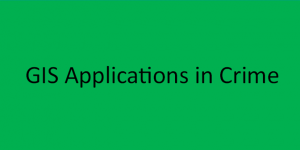Geographic Information Systems, GIS, and Geomatics are commonly mistaken to mean the same thing but the two fields are very different. Geomatics is the art of collecting and managing geographically referenced information whereas GIS collect, store, analyze and visualize geographical data.
Differences:
1. DEFINITION:
GIS: This is geographical information stored in layers. The information is integrated with a geographic software in order to create, store, and manipulate spatial information.
Geomatics: It is used to define collective data and its associated technology. It also involves processing and delivery of spatially referenced information.
2. GENERAL PRINCIPLE:
GIS: GIS is based on the principle of geocoding which involves converting geographic data into images in form of a map.
Geomatics: It involves the presentation of spatial data and processes towards sustainable development and economic growth.
3. DATA INTEGRATION:
GIS: GIS involves the integration of spatial data and descriptive data to form information as the end-product of the GIS.
Geomatics: It includes integration of geospatial technology tools like remote sensing, mapping, surveying and global positioning system.
4. DECISION MAKING:
GIS: The GIS end-product data can be used as a by-product for decision making in sustainable development.
5. COST-EFFECTIVENESS:
GIS: GIS is the most efficient, effective, and expensive method for data management, analysis, and visualization. It requires an expensive software to collect and analyze data. All input data collected must be practical and sometimes it is prone to errors.
Geomatics: It is an accurate, timely and cost-effective tool used for measurement analysis and visualization of phenomena on earth surface.
6. MANAGE FOREST RESOURCES:
GIS: GIS data is used for forest mapping. Spatial data collected is useful for understanding the ground conditions and help in coming up with the forest management system. Remote sensors are useful in detecting forest changes, analyze forest condition, and map the forest land.
Geomatics: Geomatics is used in forest conservation. A GPS system conducts a forest survey to identify any Eco-sensitive areas. The information is sent to the remote sensor and uses the information to manage the resources.
7. BETTER UNDERSTANDING:
GIS: GIS allows us to question, manipulate, summarize, and draw a pattern from the collected data in form of reports, charts or even maps.
Geomatics: Spatial data content increases the reliability of the end results and also help in ecological decisions.
8. RESOURCE ALLOCATION:
GIS: GIs leads to improved planning and allocation of resources. The analyzed data is used in planning for demographic changes in an area.
Geomatics: Geomatics uses computer science in processing and manipulation of the information system. This ensures delivery of spatial data for planning and resource allocation.
9. ENVIRONMENTAL MANAGEMENT:
GIS: GIS software is used for environmental assessment. GIS risk management supports in the development of simple databases to advanced layers outlay. Integration of GIS allows assessment of environmental effects on natural resources.
Geomatics: Geomatics technology promote knowledge on environmental analysis and management. It is used as a crucial tool in analyzing environmental information systems and any natural resources.
10. MAPPING:
GIS: Geographic Information System is responsible for mapping function. Collected data is stored in GIS database and it is represented in a mapped format.
Geomatics: Geomatics carries mapping division with the help of GIS. All analytical process in combination of mapping data results to map-based information.




A
22 Aug 2021Good comparing!
A
22 Aug 2021i wish to see integrates structured, data to produce a digital representation of an asset across its lifecycle, from planning and design to construction and operation.
Don Cuddy
11 Oct 2021The explanation did not succinctly answer my question — “What is the difference between geomatics and G.I.S?” but my interpretation from it is that geomatics deals with the digital precision of location (such as a land surveyor requires) whereas G.I.S deals with the digital storage of information about “what” is found at (or near) a location, such as a biologist, forester or soil scientist might require. Interestingly, in the original land surveys in much of North America, land surveyors were required to do both — i.e. record information about the nature of the land and vegetation at each lot corner — but that was before the age of specialization (and computers).